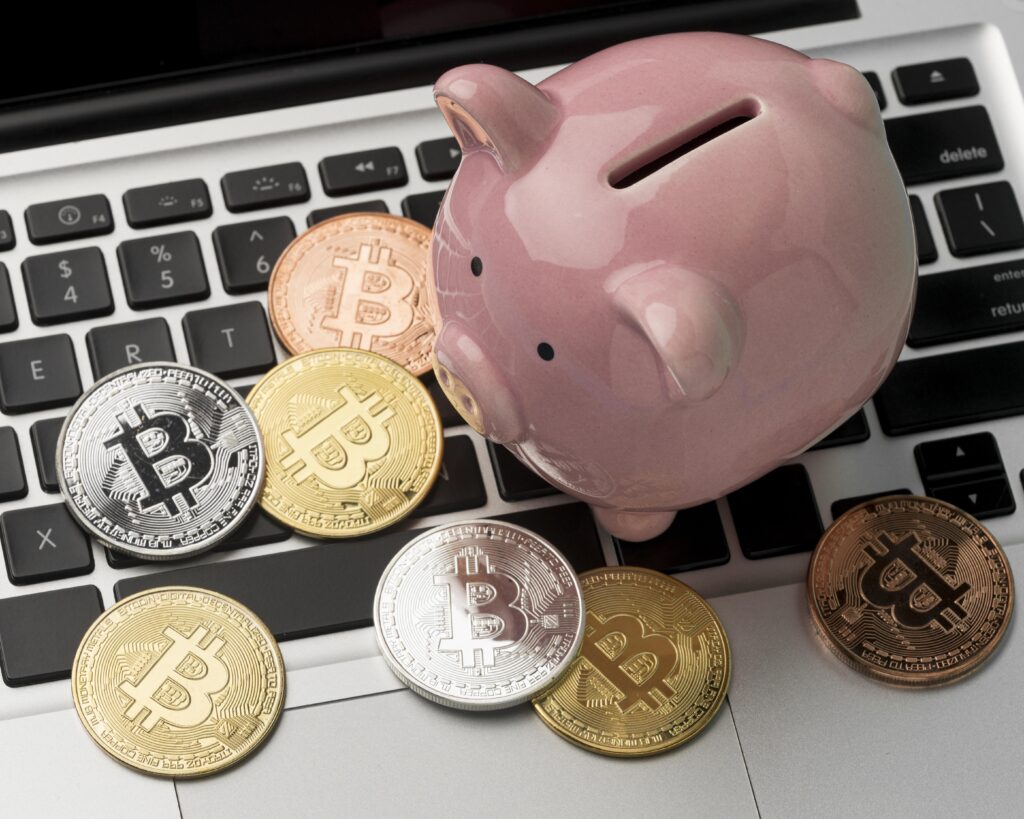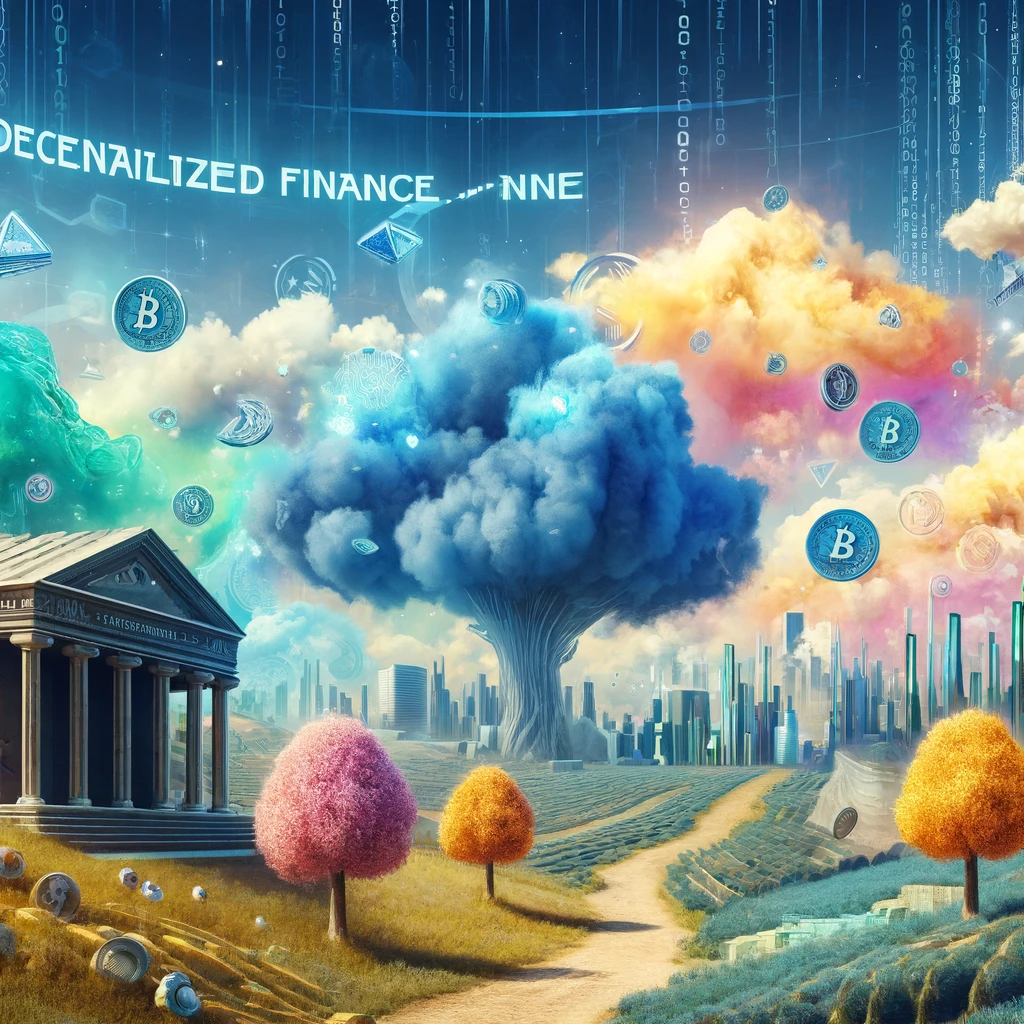Decentralized finance, commonly known as DeFi, represents a shift from traditional, centralized financial systems to peer-to-peer finance enabled by decentralized technologies built on the Ethereum blockchain. From borrowing and lending platforms to Stable coin and tokenized BTC, the DeFi ecosystem has unlocked a plethora of new possibilities. This blog will explore the fundamentals of Decentralized finance DeFi, how it operates, and why it might be a game-changer for the financial sector.
Understanding Decentralized Finance DeFi
What Exactly Is DeFi?
Decentralized Finance DeFi, refers to a growing ecosystem of financial applications built on blockchain technology. Unlike traditional finance, DeFi bypasses intermediaries like banks and brokerage firms, aiming to empower individuals with more control over their money. This is inspired by blockchain’s core feature – a distributed ledger system where multiple parties hold a copy of transaction history. This eliminates the need for central authority, potentially streamlining financial processes and increasing user autonomy. DeFi represents a significant shift in the use of blockchain technology, moving beyond simple value transfer to facilitate a wider range of complex financial activities
The Evolution and Growth of Decentralized Finance
The evolution and growth of Decentralized Finance DeFi has been marked by rapid development and innovation since its emergence with the advent of blockchain technology. Starting with foundational projects like Bitcoin and Ethereum, which introduced concepts such as decentralized money and smart contracts, DeFi has expanded into a wide array of financial applications. By 2017, early DeFi protocols like Maker DAO began to demonstrate the potential for decentralized lending and stable coins.
The sector saw explosive growth in 2019 and 2020 with the rise of applications offering services ranging from trading to insurance, driven by mechanisms like liquidity mining and yield farming. This period also saw increased mainstream attention and the entrance of institutional players. Today, DeFi is not only a thriving ecosystem with significant capital but also a field of continual innovation, facing challenges such as scalability, regulatory scrutiny, and security risks, all while potentially reshaping the future of finance.

Key Components of Decentralized Finance DeFi
Decentralized finance DeFi utilizes key principles and technologies such as smart contracts, Dapps (decentralized applications), and protocols to provide a full spectrum of financial services without needing any centralized authorities. Here’s a look at the key components of DeFi:
1. Blockchain Technology
- Description: The backbone of all DeFi applications, blockchain technology provides a decentralized and immutable ledger for recording transactions securely and transparently.
- Impact: Ensures that all financial transactions and contracts are executed without the need for central authority, reducing potential points of failure and increasing trust through transparency.
2. Smart Contracts
- Description: Self-executing contracts with the terms of the agreement directly written into code. Smart contracts automatically enforce and execute contractual terms based on predefined rules and triggers.
- Impact: Eliminates the need for intermediaries in financial transactions, lowers costs, and increases the speed of transaction processing.
3. Decentralized Applications (Dapps)
- Description: Applications that run on a blockchain network rather than being hosted on centralized servers. These can range from financial services apps to games and social networks.
- Impact: Facilitates a wide range of financial services, including lending, trading, and insurance, all operated and maintained by a peer-to-peer network.

4. Stable coins
- Description: Cryptocurrencies designed to minimize the volatility typically associated with digital coins. They are often pegged to fiat currencies or other assets.
- Impact: Provides a stable medium of exchange and store of value within the DeFi ecosystem, making them suitable for everyday transactions and financial contracts.
5. Decentralized Exchanges (DEXs)
- Description: Cryptocurrency exchanges that operate without a central authority, allowing users to trade directly with one another.
- Impact: Reduces the risks associated with centralized exchanges, such as fraud and security breaches, and enhances privacy and security for users.
6. Yield Farming
- Description: A practice where users stake or lend their crypto assets in return for interest or fees in the form of additional cryptocurrency.
- Impact: Offers potentially high returns and incentivizes users to provide liquidity, though it can come with high risks.
.
How Does DeFi Work?
The Role of Blockchain and Smart Contracts
At its core, DeFi leverages blockchain technology to manage transactions and smart contracts to execute the terms of financial agreements automatically. Blockchain ensures that each transaction is added to a public ledger, making it immutable and secure, which reduces the risk of fraud and corruption.
Smart Contracts
Smart contracts are essentially automated agreements where the terms are encoded as computer code. When a smart contract’s conditions are met, the agreement is automatically enforced. This removes the need for a middleman in financial transactions, which can help to reduce costs and increase efficiency.
Benefits of Decentralized Finance DeFi
Accessibility
One of the most significant benefits of DeFi is that it provides increased accessibility to financial services, especially for those in regions without stable access to traditional banking systems.
Innovation
The open-source nature of the blockchain technology that DeFi is built on promotes an environment of constant innovation and improvement.
Security
While not impervious to risks, DeFi is typically more secure than traditional banking because of the cryptography used in blockchain technology.

Challenges Facing Decentralized Finance DeFi
Scalability
The current Ethereum network can only handle a limited number of transactions per second, which can lead to delays and higher costs during peak times.
Regulation
As a new technology, DeFi is not yet well-regulated, and this can pose risks in terms of broader financial stability and individual consumer protection.
Complexity The technology behind DeFi can be complex and difficult to understand for the average consumer, limiting its adoption rate.
Challenges and Risks of Decentralized Finance DeFi
| Challenge/Risk Type | Description | Potential Impact |
| Smart Contract Risks | Errors or bugs in smart contract code can lead to loss of funds or unintended operations. | Can result in significant financial losses and reduce trust in DeFi platforms. |
| Regulatory Uncertainty | Lack of clear regulatory frameworks can lead to compliance risks and potential legal challenges. | May deter institutional involvement and can lead to shutdowns or fines. |
| Scalability | Blockchain networks, particularly those that host a large number of DeFi applications, can suffer from network congestion and high transaction fees. | Limits the system’s ability to grow and can deter users due to increased costs. |
| Market Volatility | DeFi is largely dependent on cryptocurrencies, which are highly volatile. | High volatility can lead to rapid and significant losses, especially in protocols dependent on collateralization. |
| Security Vulnerabilities | DeFi platforms can be targets for hacks due to the value stored in their contracts. | Loss of user funds and diminished trust in the DeFi ecosystem. |
| Liquidity Risks | DeFi markets can sometimes suffer from low liquidity, leading to slippage or difficulty in executing large transactions without impacting the market. | Could result in financial losses for users and affect the stability of DeFi services. |
| Impermanent Loss | Occurs when providing liquidity to a liquidity pool and the price of your deposited assets changes compared to when they were deposited. | Can lead to losses for liquidity providers when the price volatility of the underlying assets is high. |
| Lack of Insurance | Unlike traditional banking, most DeFi platforms do not offer any insurance on deposits. | Users face higher risk as there is no protection against losses from failures or attacks. |
| Interoperability Issues | DeFi projects are often built on different blockchains, which may not always seamlessly interact with one another. | Can limit the effectiveness and efficiency of DeFi applications, reducing user adoption. |
| Complexity and Usability | DeFi applications can be complex and difficult to use, with interfaces that are not user-friendly. | Prevents broader adoption by non-technical users and poses risks due to user errors. |

The Future of Decentralized Finance DeFi
Decentralized finance DeFi offers a compelling alternative to traditional banking, but it still has many challenges to overcome. As technology evolves and more people become aware of the benefits of DeFi, it could become a more integral part of the global financial landscape.
Conclusion
Decentralized Finance DeFi promises a transformative shift towards more accessible and transparent financial systems through blockchain technology. While it offers significant opportunities for innovation and inclusion, DeFi also faces challenges like regulatory scrutiny and technical risks. As the landscape evolves, collaboration and prudent advancements are crucial for realizing the full potential of DeFi in reshaping global finance.
FAQs
Q: What is the main difference between DeFi and traditional finance?
A: The main difference is that DeFi eliminates the need for intermediaries by allowing people to transact directly with one another through a blockchain network.
Q:How secure is DeFi?
A: DeFi is built on blockchain technology, which is known for its security due to encryption and decentralization. While smart contracts offer numerous advantages, security vulnerabilities still pose a challenge
Q: Can anyone participate in DeFi?
A: Yes, one of the fundamental tenets of DeFi is open access for anyone with an internet connection and a compatible wallet.
You might be interested in reading related https://moneyymagnett.com/how-to-invest-in-cryptocurrency/

